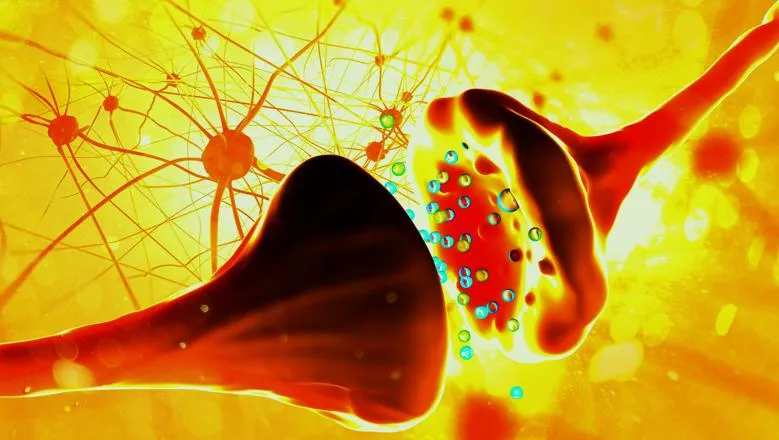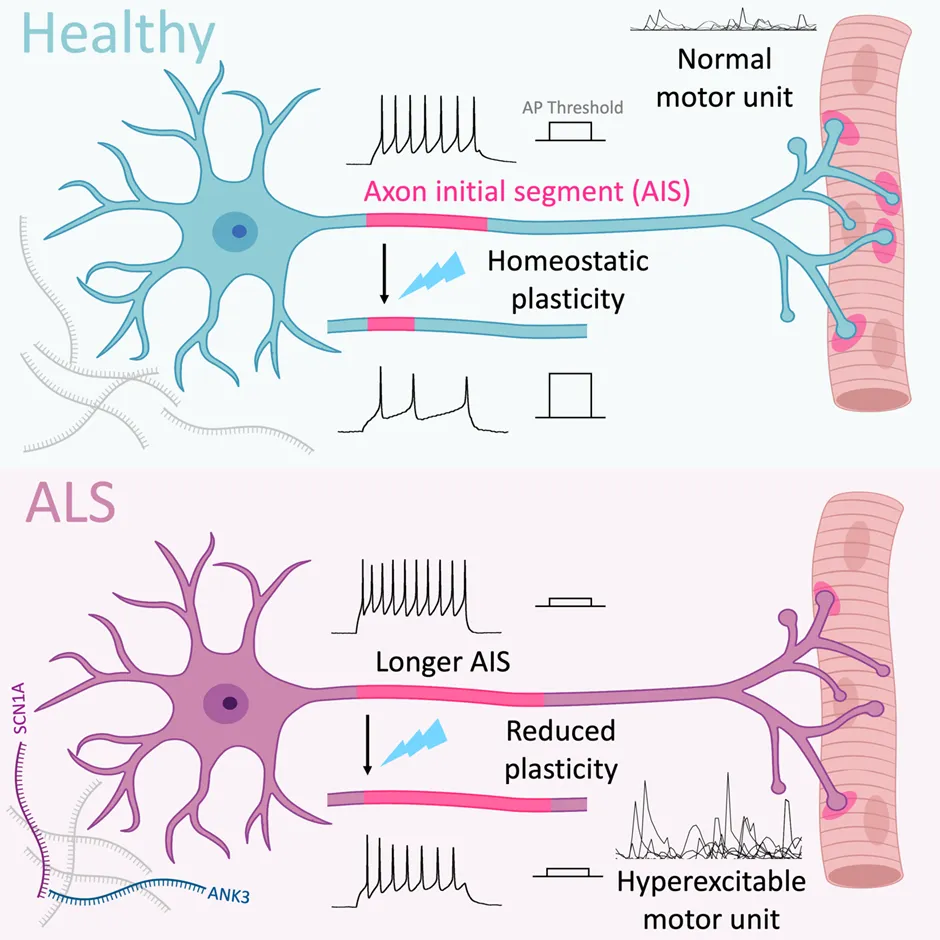New study identifies the axon initial segment as the region driving abnormal regulation of neuronal activity in ALS

A new study, published today in Cell Reports, reported a novel mechanism behind dysregulated neuronal activity, a key pathology of amyotrophic lateral sclerosis (ALS). Researchers at King's College London found that molecular, structural, and functional changes in the axon initial segment (AIS) drive abnormal neuronal excitability. This is the first study to pinpoint the role of AIS, a specialised region of motor neurons, in ALS pathology.
ALS, also known as motor neurone disease, causes progressive degeneration of neurons in the brain and spinal cord. It is a devastating illness that affects 1 in 300 people in the UK, with 1 in 3 individuals dying within a year of diagnosis. There is no cure and the development of treatments is difficult as the disease mechanism is still poorly understood and involves numerous genetic mutations as well as environmental factors.
In this study, the researchers focused on two of the most common genetic causes, mutations in the genes TDP-43 and C9ORF72. They examined how these mutations affect the axon initial segment, the region where electrical signals in neurons initiate. In ALS, electrical signalling in motor neurons is thought to initially increase during the early stages of the condition and then gradually become impaired as the cells deteriorate and lose their ability to respond properly to stimuli.
Using motor neurons generated from patient-derived stem cell lines, they observed that the length of the AIS region is increased in the early stage of ALS. This is accompanied by reduced plasticity, where the AIS loses its ability to regulate its response to ongoing stimuli, resulting in hyperexcitable motor neurons. This ultimately leads to an increase in spontaneous muscle contractions that resemble the involuntary muscle twitches (fasciculations) seen in ALS patients.

Furthermore, they observed that the late-stage ALS motor neurons showed AIS shortening leading to hypoexcitability. This shortening is also seen in ALS post-mortem tissues. The researchers stated that this difference in AIS length in the disease progression warrants further study as it may represent an important switch in the progression of the disease, with important functional consequences.
The study proposes that the changes in neuronal activity are caused by changes in the morphology of the AIS, likely due to alterations in the expression of AIS scaffolding protein and AIS-specific sodium channels.
Our finding provides a novel mechanism behind a key pathology in ALS. We showed that the axonal initial segment has an important site of dysfunction in motor neurons caused by different genetic mutations. This provides a better understanding of the complex mechanism of this disease and a new therapeutic target to improve neuronal function."
Dr Ivo Lieberam, Joint Corresponding Author of the Study
This study has shown us that the AIS is a key site in the early stages of ALS pathology and requires further investigation. We now need to expand our investigation across other spinal cord and brain regions and different genetic mutations. It will be important to examine whether these structural and molecular changes of the AIS destabilise the neurons somehow, rendering them vulnerable to further pathological insults"
Professor Juan Burrone, Joint Corresponding Author of the Study






